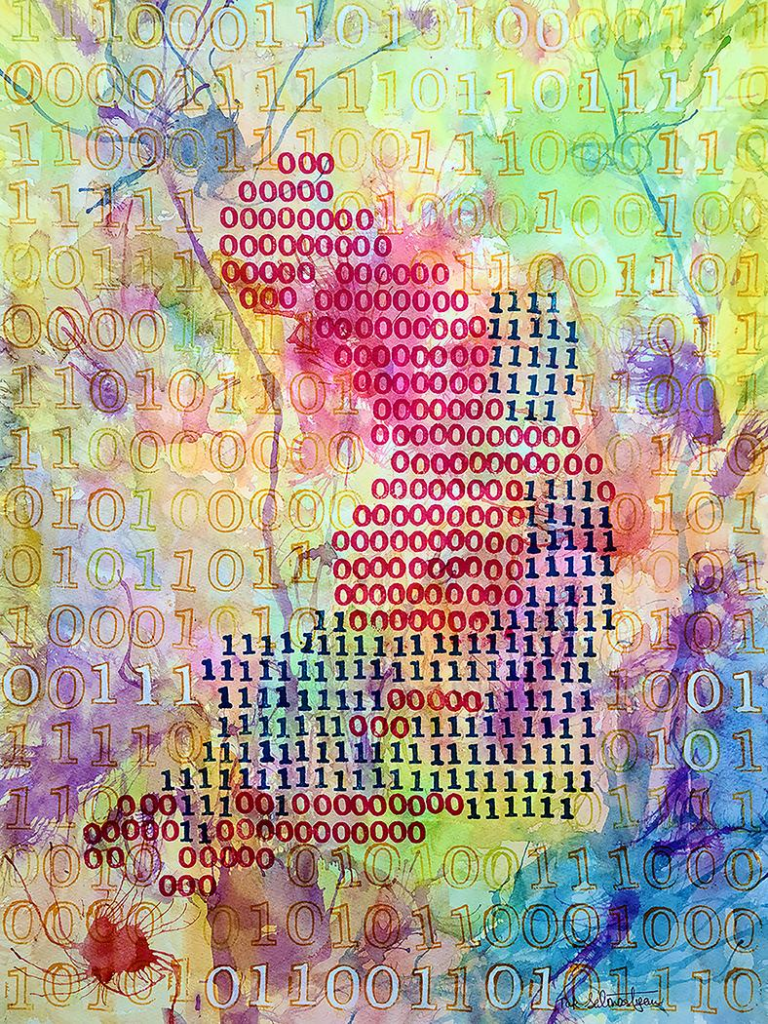In its many forms, art serves as a global language, overcoming cultural barriers and uniting people globally. The artist’s work integrates tales, emotions, and viewpoints, appealing to individuals from diverse backgrounds. For example, an Armenian picture or an African sculpture might elicit feelings in someone in America, demonstrating the shared human experience. Artistic works often contain aspects from the artist’s cultural past, giving spectators a window into their culture, customs, and history. Artists also take inspiration from many cultures and incorporate these ideas into their work. Art and artists play an important role in bridging cultural gaps, appreciating variety, and encouraging global harmony. Takvor or Tak Salmastyan is one of the few contemporary artists who have successfully integrated the rich tapestry of many cultures into their work.
Salmastyan’s new approaches, BinArism™ and Auto Plasticism, demonstrate how art can bridge cultural differences and embrace modern influences. His journey from the landscapes of Soviet Armenia to the thriving creativity of Los Angeles, California, is more than just a personal triumph; it’s a story of how art transcends geographical and cultural borders. Tak Salmastyan, born on April 20, 1963, in Soviet Armenia, became a significant player in the American art scene. His artistic work and creative techniques combine cultural history with contemporary invention, particularly influenced by modern life and computer technologies.
Tak Salmastyan developed and pioneered the BinArtism™ style, a novel painting method using the binary number system to create images. This style employs just two symbols: “0” and “1”. In BinArtism™, human, animal, or other silhouettes are depicted using these binary digits, with “0” typically representing the female symbol and “1” the male symbol. The background of these images often features a short phrase or word in binary code, reflecting a direct influence from modern life and computer technology rather than his Armenian heritage.
Auto Plasticism, another unique style developed by Salmastyan, is a blend of Neo-Plasticism and Automatism, strongly emphasizing geometric shapes, the Golden Ratio, and the Fibonacci Sequence. This method restricts movement to horizontal and vertical lines, using only primary colors: black, white, and gray. Auto Plasticism is characterized by its strict adherence to these rules, combining the precision of mathematical sequences with the freedom of artistic expression.
Salmastyan’s painting and art changed dramatically in Los Angeles when he started to merge his Armenian heritage with the many influences of American society. This synthesis is visible in his distinct styles, which combine his cultural heritage and his experiences in America. His artworks, typified by this ethnic amalgamation, demonstrate his ability to manage and cherish diversity. His artworks and artistic styles, including BinArtism™ and Auto Plasticism, reflect his blending of Armenian heritage and American culture.
Tak Salmastyan developed and pioneered the BinArtism™ style, which uses the binary number system to generate beautiful and meaningful pictures. Although very contemporary, this style hints at his Armenian roots, notably in how it combines simplicity and intricacy. Auto Plasticism, on the other hand, combines Neoplasticism with Automatism, using the Golden Ratio and Fibonacci Sequence. This style pays homage to his scientific and mathematical background in Armenia but is reinterpreted through the prism of his American experiences.
These art styles and artworks are physically appealing and serve as tales recounting stories of journeys across countries and cultures. They represent a conversation between the classical and the modern, the traditional and the contemporary. Salmastyan’s paintings enable viewers to study Armenia’s rich past while experiencing America’s diverse cultural environment.
Tak Salmastyan’s transition from Armenia to America and his creative progress exemplify how art can cross cultural borders. His art acts as a bridge between two cultures, providing a distinct viewpoint firmly entrenched in his ancestry while still being broadly global in scope. As he continues to explore and create, Salmastyan’s work remains a monument to the uniting force of creativity, a beacon of cultural convergence amid the variegated world of contemporary art.
Tak Salmastyan’s role as an instructor at the Art Institute of California is just as important as his accomplishments as an artist. His cross-cultural experiences have significantly impacted his teaching philosophy, allowing him to give his pupils a unique viewpoint. In his courses, students from many backgrounds discover a shared language in art. Salmastyan’s mentoring extends beyond teaching methods; he instills in his pupils a love of varied creative styles and encourages them to explore their ethnic identities through painting. His approach to education and training reflects his belief in art as a global language that crosses cultural boundaries.

Photo Courtesy: Tak Salmastyan / www.taksalmastyan.com
Tak Salmastyan’s artworks act as bridges linking various cultures through visual tales. His paintings, rich in symbolism and influenced by multiculturalism, allow visitors to go on a cultural trip. His BinArtism™ artworks generally represent his Armenian background, while his Auto Plasticism works embody the energy of American society. Several exhibits have shown these artworks, such as Gallery 825 in Los Angeles and Upstream Gallery in New York. They have been commended for their capacity to connect cultural disparities. Salmastyan’s artwork catalyzes international connection, providing a platform for manifesting creativity, fostering cultural comprehension, and cultivating empathy.
Salmastyan’s transition from Armenia’s historic landscapes to America’s flourishing art community showcases his unwavering determination, flexibility, and innovative advancement. His impact on the art world goes beyond creating unique artistic forms; he has played a crucial role in fostering cultural comprehension via his artistic endeavors and teaching. His ongoing exploration of new creative realms profoundly influences the worldwide art community. Salmastyan’s legacy encompasses his artistic creations and the cultural connections he nurtures, establishing him as an authentic ambassador of cross-cultural art in the modern day.
Tak Salmastyan embodies the core of cultural amalgamation and ingenuity through his life and work. The trip he undertook showcases the capacity of art to transcend cultural barriers and foster international understanding. His ongoing inspiration and education will undoubtedly have a lasting impact on the art world and beyond.
Published by: Martin De Juan






